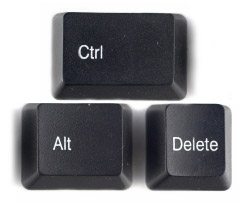 What’s the first thing you’re told to do if something goes wrong with your computer? Reboot it. Sometimes it can be this simple. Other times, not so much.
What’s the first thing you’re told to do if something goes wrong with your computer? Reboot it. Sometimes it can be this simple. Other times, not so much.
Reboot to Restore technology takes this concept to a whole new level. They are designed so that you don’t have to fix the system after settings get changed. When used correctly, a simple reboot will return your entire computer back to its original shape.
This goal can be reached in a number of ways:
- Disk Imaging Technology
The entire hard drive or a specific partition can be overwritten with a new image. Once reimaged, the computer boots as brand new. The all of the hard drive sectors get completely overwritten. - Buffer File
Changes are not being written to the hard drive permanently, but rather to a huge file on the hard drive. This huge file serves as a buffer. It lets you decide what changes get written to the drive permanently, and which ones won’t. - Virtual Machine
Similar to a Buffer File is a virtualization approach. In this case the entire client VM can be reset. This allows for a reboot into the original settings. - File Synchronization
A master (perfect) snapshot of files is compared with what’s available on the computer and any files that have changed are rewritten. - Block Level Protection
Unlike other technologies, this approach doesn’t work with individual files. Instead it works with specific sectors on the hard drive. Entire sectors are protected, so no changes stick to those protected partitions. This allows for fresh image upon restart. - Read Only File Systems
Some operating systems allow for mounting file systems in read only mode. When a file system is attached this way, no changes can be saved to this partition. - Hardware Solutions
This is an physical card that plugs into the motherboard. It serves as a “read only” switch for a specific hard drive. Remember those 3.5″ disks from years ago? You could “write-protect” those by locking the pin. This card works the same way.
Stay tuned for the next segment where I’ll start to discuss the pros and cons of each of these solutions.




